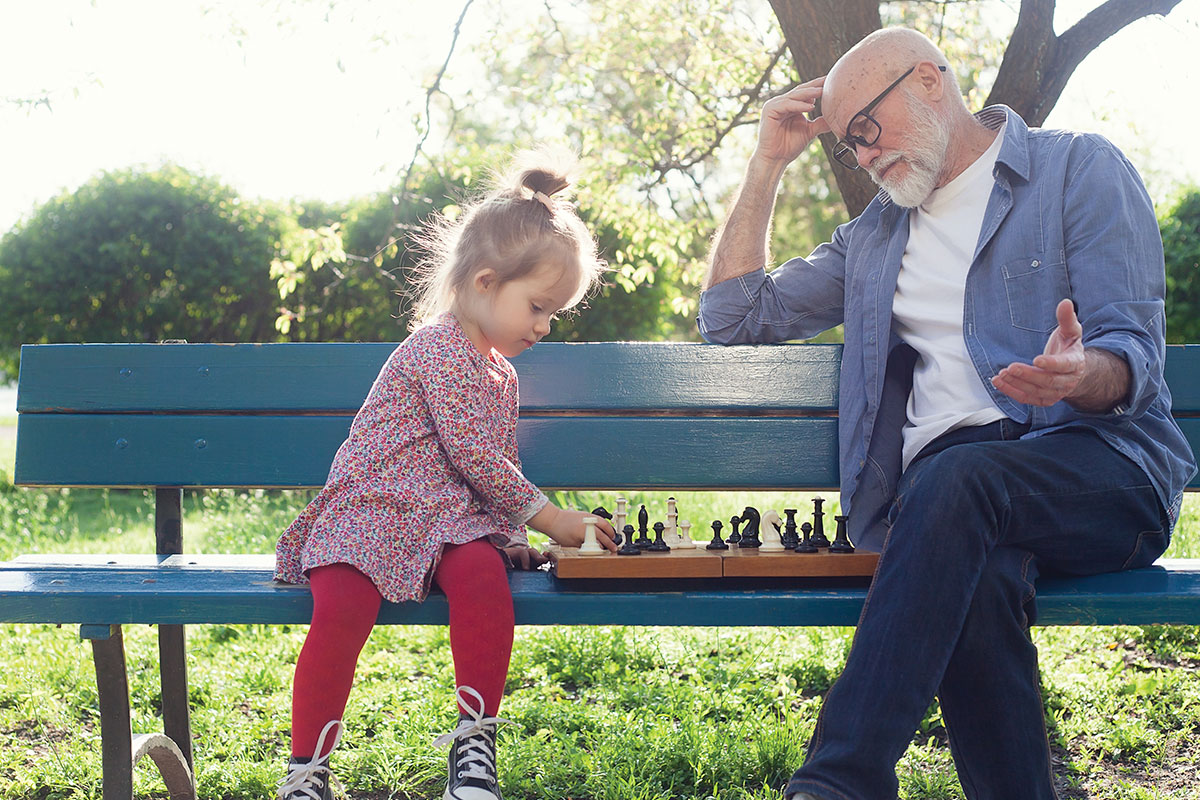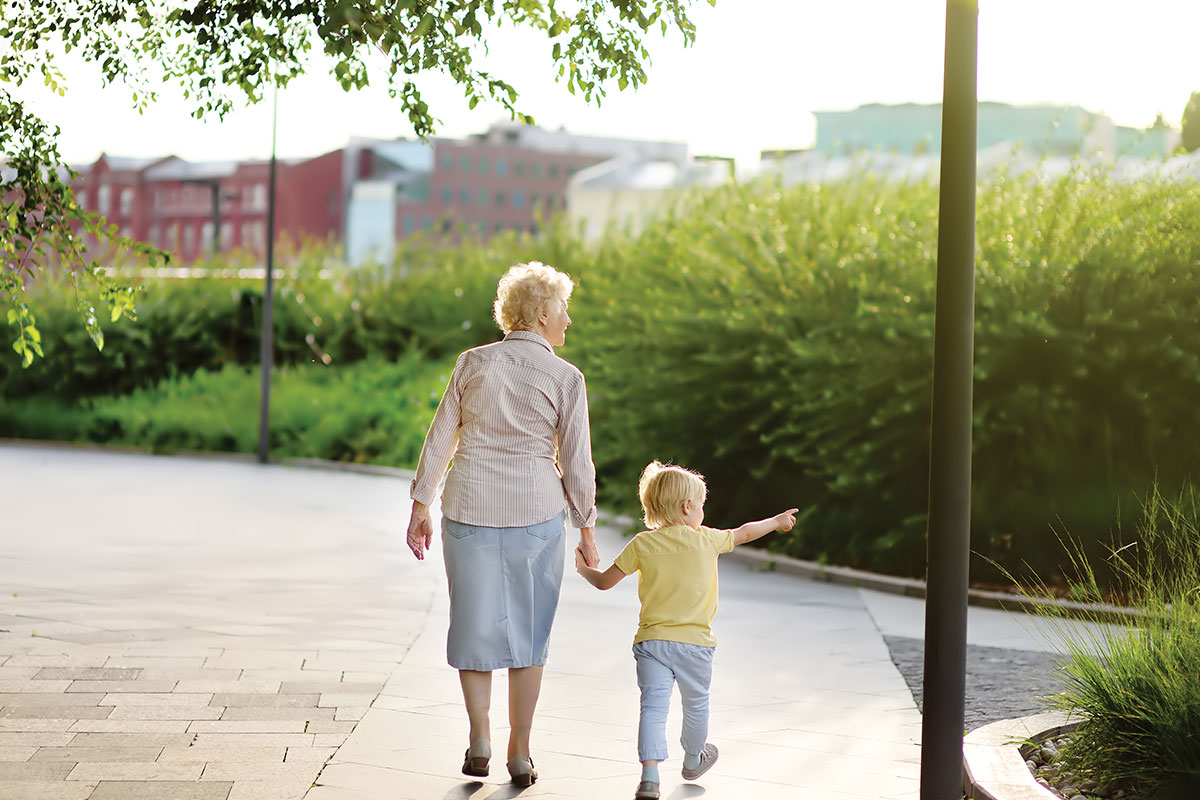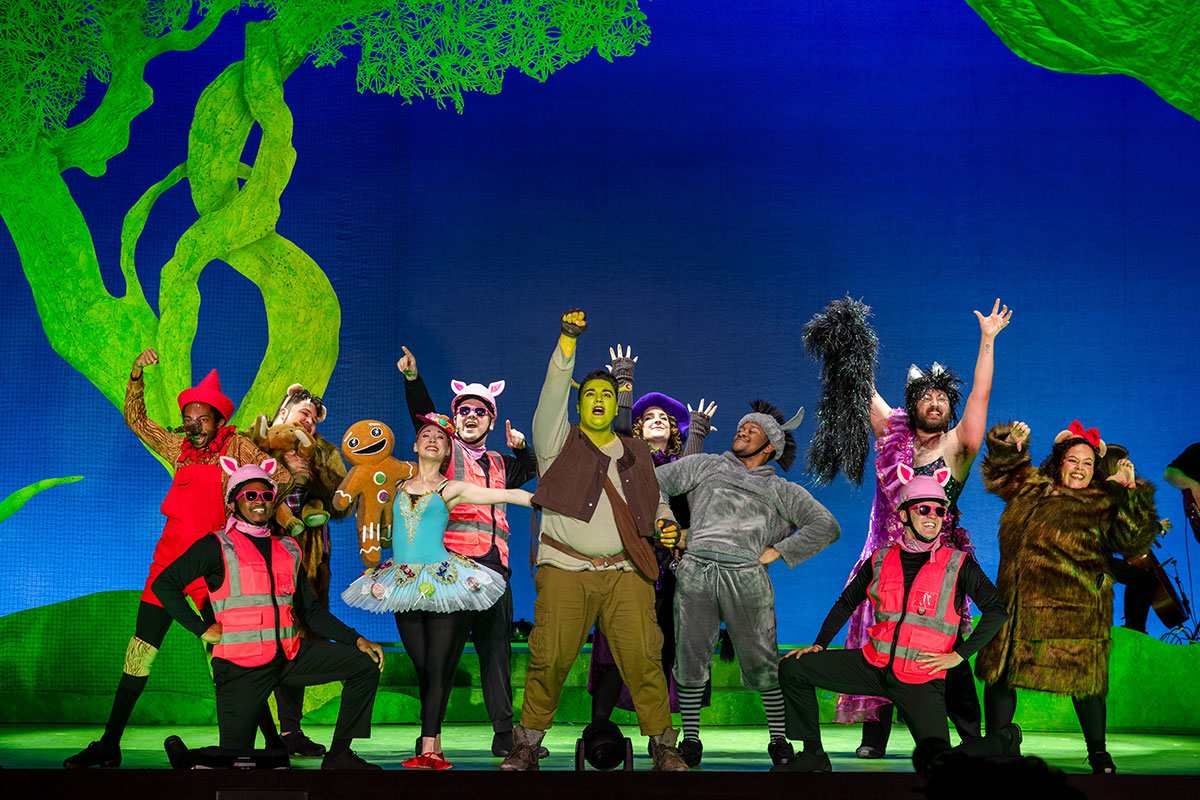
Mariam Dominguez’s father and father-in-law are both deceased, but her children, 6-year-old Sabrina and 3-year-old Josef, don’t lack for grandfather figure+++s in their lives.
As students at Merritt Academy in Fairfax, Sabrina and Joseph both participate in the intergenerational program, Seniors and Students Together, with The Virginian, a neighboring retirement community.
The program offers seniors and students a regular opportunity to interact with each other during activities like storytelling and singalongs for younger children, and sharing classroom lessons and community service projects for older students.
“(The students) come away with an understanding and respect of people who are different than they are,” says Christin Soly, executive director at Merritt Academy. “The children are growing and learning social and emotional skills. They’re learning manners and values. They learn that every person has something to teach. I’m a parent of four, and I see how comfortable my girls are with seniors.”
Merritt, which offers care and education for infants through eighth grade, is located adjacent to The Virginian, and shares a campus with a branch of Sunrise Senior Living Community, which is being renovated and is expected to reopen in 2021. The students also visit with seniors at The Kensington in Falls Church.
Donna Butts, executive director of Generations United, a DC-based nonprofit organization dedicated to intergenerational collaboration and benefits through programs and improved public policy, says both young children and seniors benefit greatly from interacting with each other.
“For young people, they have that extra someone who cares about them and invests in them. They learn soft skills, how to be patient, how to say thank you, how to accept people who don’t look like them. Children who are in intergenerational care are more accepting,” she says. “For older adults, it gives them a sense of purpose to feel like they’re useful. They have the opportunity to pass on their wisdom. Throughout our history and culture, it’s how we’ve passed on our stories, our wisdom.”
Indeed, teachers and administrators at Merritt Academy have seen their students benefit from the Grandfriends program, which started in 1991.
Students take part in a variety of age-appropriate activities that foster connections and offer opportunities to learn from each other. For example, 4-year-olds might play bingo, while third graders work with the seniors to pack lunches for homeless shelters. Some of the older children have interviewed their grandfriends about history.
“It was so much more interesting to talk about Veterans Day with people who had actually fought in wars,” is the sentiment expressed by several sixth graders, according to the school’s website.
Older students have also helped teach the seniors how to use iPads, social media and video chatting—all necessary components of corresponding with one’s faraway grandchildren these days.
Some of the youngest children, usually 2-year-olds, visit the Memory Care unit, which is where seniors with Alzheimer’s or other forms of dementia live.
“Sending toddlers to the memory unit is good,” says Melissa Denny, special programs director at The Virginian, “because the toddlers aren’t going to remember either, but a second grader will get more frustrated.”

One of the oldest intergenerational engagement programs in the United States is the Foster Grandparents program, which launched in 1965. The government grant program pairs adults 55 or older with at-risk youth for the benefit of both. Since then, intergenerational programs in the U.S. have multiplied and expanded, from shared site programs to quasiregular community service visits, to home-sharing.
A Boston-based app, Nesterly, for example, pairs seniors with young adults who will rent a room at a reduced rate in exchange for helping with household chores.
In addition to benefiting both the children and the seniors, shared site programs—where a children’s day care or nursery school shares a building or campus with a senior living or day center—can provide relief for members of the sandwich generation, a term for the increasing number of adults who are caring for both their young children and aging parents at the same time.
“People will say, ‘It’s wonderful to have a place I can take my mother and my daughter,’” says Butts. “They know the grandchild will see the grandparent. They’re taking care of dependent care needs in a one-stop shop.”
Intergenerational programs can also play a major role in improving societal attitudes about aging, says Dr. Shannon Jarrott, a gerontologist and professor of social work at The Ohio State University.
“Older adults are largely absent (from a lot of pop culture) and are often negatively portrayed. There are many places that make it difficult for older and younger people (to interact productively),” she says. “We have an opportunity to present a counterargument to developing a fear of old age.”
Jarrott was previously at Virginia Tech, where she headed the Department of Human Development and was the director of Intergenerational Programs, spearheading and leading multiple research projects, including Neighbors Growing Together, a shared-site intergenerational program that was named a Program of Distinction by Generations United.
“We had all these university students coming through, as well as preschool-aged children and older adults,” she says. “It helped to assuage negative stereotypes the students had about (older people).”

Programs like Merritt’s Grandfriends help instill positive attitudes about aging from the time children are young.
“They learn how to be respectful, and how to observe and listen,” says Soly, including to seniors who might have trouble expressing themselves because of memory or cognitive issues. Spending time with aging adults, she says, also helps students normalize assistive devices like wheelchairs or oxygen masks.
When Mariam Dominguez’s mother had knee replacement surgery and needed to use a walker, her children recognized the equipment and its purpose.
“My daughter was familiar and she wasn’t nervous. She wanted to help,” says Dominguez.
While Merritt’s program is well-established, a new friendship is forming between the residents of Poet’s Walk, a memory care assisted-living facility in Leesburg, and Little Tree Huggers, a bilingual, eco-based, in-home day care and preschool nearby. On Earth Day, the two groups gathered for their first shared activity: planting flowers.
“It was fantastic,” says Lia D. Johnson, the founder and director of Little Tree Huggers. “It was really very exciting and very emotional at the same time. I think it rejuvenated (the seniors). The children are naturally compassionate and loving. They somehow become more patient in the presence of the elderly, and the seniors, in turn, are energized by the children and are very loving with them.”

One Poet’s Walk resident, whose family requested his name not be printed, presented the children with lollipops. “As soon as he saw there were children, he picked up his walker (and) ran to his room to gather the treats. He is very generous to the other residents as well,” says Amanda Hill, director of Resident Engagement at Poet’s Walk.
While finding opportunities for the residents of Poet’s Walk to interact with young children is a priority, Hill says, regulations can make it challenging to initiate programming with traditional nursery or elementary schools. As Little Tree Huggers is a privately owned day care, there was less red tape. And while the Earth Day event was the first visit between Poet’s Walk and Little Tree Huggers, the participants met one another with warmth and familiarity.
“I was actually kind of worried,” says Little Tree Hugger parent Sarah Donohue, of her daughter Madeline, who is 4-and-a-half. “I didn’t know how Madeline would react but she walked right over to the first fellow and said, ‘Hi, my name’s Madeline.’ The kids were like, ‘Do you want to plant with us?’ It was really cool to stand back and see how the kids jumped in.”
Dohonue’s children are fortunate to have great-grandparents who live nearby, but for many people, the DC Metro area is only home for a little while, so they might not have extended family nearby.
“I grew up with my grandmother in my house, so that gave me the passion to keep the program going,” says Denny, of Merritt Academy.
Likewise, says Hill, “In today’s world, families are more spread apart and it’s more difficult for the generations to interact with each other except for special occasions. I saw my grandmother a lot throughout my childhood. I have memories of visiting my great-grandmother in the nursing home as a child. It was always a positive experience.”
Indeed, research has found that creating opportunities for children and older adults to interact leads to positive experiences and outcomes for all parties. Seniors, Jarrott remarked, will often have their responsibilities taken away, however, a child can help them to feel needed, by asking for a story or just by needing a smile or some encouragement.
And for busy, harried parents, the grace older people often show to young children can be a blessing.
“People who have a lot of life experiences are very patient,” says Donohue. “As parents, we’re like, ‘Get in the car, you’re making me late’. It’s nice that (the seniors) have a lot of patience for kids who take 20 minutes to tell a story.”
“You might have a child who is acting out and an older adult who is lethargic,” says Donna Butts, “but you put them together in a room and they both rise up to meet the expectations of the other.”
This issue originally appeared in our July 2019 issue. For more family and senior living content, subscribe to our newsletters.




